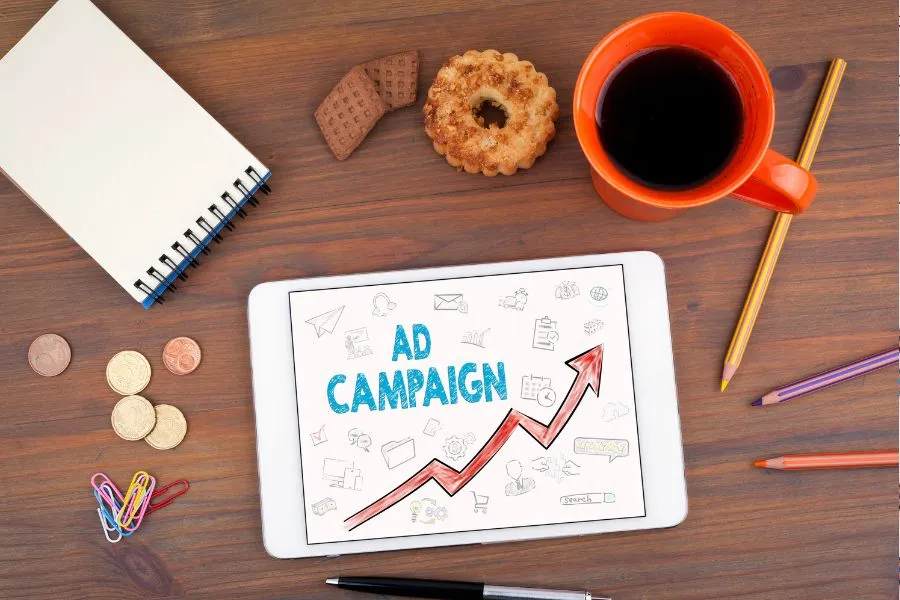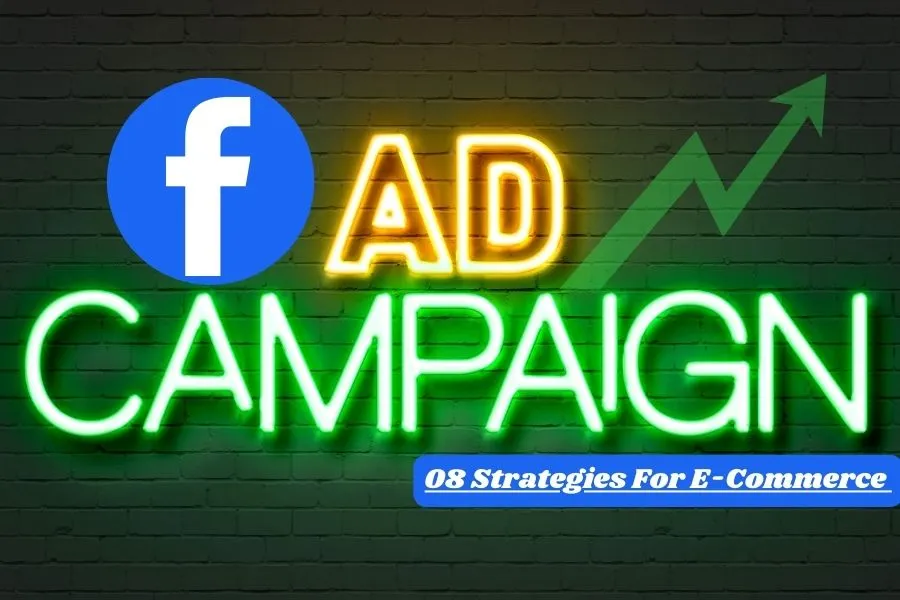Table of Contents
Introduction
In the emerging world of e-commerce, staying updated on the competition is crucial. One of the most effective ways to do this is by mastering Facebook ad campaigns. With over 2.8 billion monthly active users, Facebook remains a dominant platform for online advertising, particularly for e-commerce businesses. This article will dive deep into the best Facebook ad campaign strategies for e-commerce in 2024, ensuring that you stay ahead of the curve.
Best Facebook Ad Campaign Strategies For E-Commerce
1. Facebook Ad Funnel

1. Awareness Stage
At the top of the funnel is the awareness stage, where the goal is to introduce your brand to potential customers. This is where you focus on broadening your audience by creating ads that generate interest and attract attention.
Examples:
- Brand Awareness Ads: Create ads that showcase your brand’s personality and values. For example, a fashion brand could run a video ad featuring a model wearing their latest collection.
- Reach and Frequency Ads: Target a wide audience with ads that increase brand visibility.
- Video Ads: Create engaging videos that tell your brand’s story or highlight your products.
2. Consideration Stage
Once potential customers are aware of your brand, the next step is to move them into the consideration stage. Here, you provide more detailed information about your products or services, encouraging users to consider your offerings over competitors.
Examples:
- Carousel Ads: In single ad show multiple products or features.
- Slideshow Ads: Create visually appealing slideshows to highlight your offerings.
- Lead Generation Ads: Collect contact information from interested users.
3. Conversion Stage
The final stage of the funnel is conversion, where the goal is to turn interested users into paying customers. At this point, your ads should be focused on driving sales through compelling offers, discounts, and calls to action.
Examples:
- Product Catalog Ads: Showcase your entire product catalog.
- Dynamic Ads: Personalize ads based on user behavior.
- Offer Ads: Promote limited-time discounts or promotions.
2. Setting Clear Objectives for Your Facebook Ad Campaign
1. Brand Awareness
If your primary goal is to increase brand awareness, focus on creating visually appealing ads that highlight your brand’s unique selling points. Use engaging images and videos to capture the attention of your target audience.
Example: A new fashion brand wants to introduce its latest collection to a wider audience. They create a video ad showcasing their models wearing the new line, set to a catchy soundtrack. The ad focuses on the brand’s unique aesthetic and encourages viewers to follow their page for more updates.
2. Lead Generation
For businesses looking to generate leads, consider using lead ads that allow users to sign up for newsletters, free trials, or other offers directly within Facebook. This reduces friction and makes it easier for potential customers to engage with your brand.
Example: An online course platform aims to attract new students. They create a lead ad offering a free webinar on a popular topic. The ad includes a sign-up form that users can fill out directly within Facebook. The platform can then nurture these leads with targeted email campaigns.
3. Direct Sales
When your objective is to drive direct sales, your ads should be designed to encourage immediate action. Use strong calls to action and showcase your best-selling products to entice users to make a purchase.
Example: An e-commerce store wants to promote a limited-time sale on their popular product. They create a product ad highlighting the discount and featuring high-quality product images. The ad includes a clear call to action, such as “Buy Now,” and links directly to the product page.
3. Audience Targeting Strategies
1. Utilizing Facebook’s Custom Audiences
Custom Audiences allow you to target users who already visit your site, such as past customers or website visitors. This is an effective way to re-engage with people who are already familiar with your business.
Example: A clothing brand creates a custom audience of people who have purchased their products in the past month. They can then target this audience with a promotion for a new collection.
2. Lookalike Audiences
Lookalike Audiences is best way for expanding your reach. By targeting users who share similar characteristics with your existing customers, you can tap into new segments of potential buyers.
Example: A travel agency creates a lookalike audience based on their existing customers. They can then target this audience with ads for new destinations or travel packages.
3. Interest-Based Targeting
Interest-based targeting lets you reach users based on their interests, such as hobbies, favorite brands, or activities. This can be particularly useful for e-commerce businesses looking to target niche markets.
Example: A gaming company targets users interested in “first-person shooters” and “online gaming” with ads for their new multiplayer game.
4. Creating Compelling Ad Creatives
1. Importance of Visual Content
In the world of social media, visuals is the best way to engage audience. High-quality images and videos are essential for capturing attention and conveying your message quickly. Ensure your visuals are not only eye-catching but also relevant to your brand and products.
Example: A skincare brand could create a video showcasing a model applying their product and then revealing their glowing skin. This visually demonstrates the product’s effectiveness.
2. Writing Engaging Ad Copy
Your ad copy should complement your visuals and provide a clear message. Keep it concise, persuasive, and focused on the benefits of your product or service. Use action-oriented language that encourages users to take the next step, whether that’s visiting your website or making a purchase.
Example: Instead of simply saying “Buy our shoes,” a shoe brand could use a tagline like “Step into comfort and style.” This is more persuasive and encourages action.
3. Effective Use of Facebook Ad Sizes
Facebook offers various ad sizes, and using the correct dimensions is crucial for ensuring your ads look professional and perform well.
For example, image ads should ideally be 1200 x 628 pixels, while video ads work best at 1080 x 1080 pixels.
5. Choosing the Right Facebook Ad Format
1. Image Ads
Image ads are simple yet effective, perfect for showcasing individual products or highlighting a specific promotion. Ensure your images are high quality and aligned with your branding.
Example: A simple ad showcasing a new smartphone with a catchy headline and a high-quality image of the device.
2. Video Ads
Video ads are increasingly popular on Facebook, offering an engaging way to tell your brand story or demonstrate product features. Videos should be short, impactful, and optimized for mobile viewing.
Example: A short video demonstrating the benefits of a new skincare product, with a clear call to action at the end.
3. Carousel Ads
Carousel ads help you to show multiple products or features in a single ad. This format is particularly useful for e-commerce businesses with a diverse product range.
Example: A carousel ad highlighting different styles of a popular clothing item, with a swipe-able format.
4. Collection Ads
Collection ads are best for mobile users, combining a cover image or video with multiple product images below. This format is ideal for driving conversions, as users can browse your products directly from the ad.
Example: A collection ad featuring a new line of makeup products, with a cover image and multiple product images below.
6. Optimizing Your Ad Budget
Budget Allocation Strategies
Effective budget allocation is key to maximizing the return on your ad spend. Start by testing different campaigns with small budgets to see which performs best, then allocate more funds to the top-performing ads.
Bidding Strategies
Facebook offers various bidding strategies, including cost-per-click (CPC) and cost-per-thousand-impressions (CPM). Choose strategy that aligns with your campaign objectives. For example, if you’re focused on conversions, CPC might be more effective.
A/B Testing for Budget Optimization
A/B testing determine that which performs of ad is better. This helps you refine your ad creatives and targeting, ensuring your budget is spent on the most effective ads.
7. Using Facebook Pixel for Better Tracking
1. What is Facebook Pixel?
Facebook Pixel is a piece of code you place on your website to track user behavior. It helps you measure the effectiveness of your ads by monitoring actions like purchases, sign-ups, and page views.
2. How to Install and Use Facebook Pixel
Installing Facebook Pixel involves adding a small piece of code to your website’s header. Once installed, you can track conversions, optimize your ads, and build targeted audiences for future campaigns.
Process:-
1. Create a Facebook Business Manager Account: If you don’t have one already, create a Facebook Business Manager account.
2. Set Up a Pixel: Go to your Business Manager and create a new pixel.
3. Get the Pixel Code: Facebook will provide you with a piece of JavaScript code.
4. Install the Code: Add the code to your website’s header. You can usually do this by editing your website’s HTML code.
5. Set Up Events: Define the actions you want to track, such as purchases, sign-ups, or page views. These are called events.
3. Importance of Pixel Data in E-Commerce
Pixel data is invaluable for e-commerce businesses. It allows you to understand how users interact with your website after clicking on your ads, enabling you to refine your campaigns for better results.
8. Retargeting Strategies

1. Importance of Retargeting in E-Commerce
Retargeting is essential for e-commerce businesses, as it allows you to re-engage with users who have shown interest in your products but haven’t made a purchase yet. This can help to increase your conversion rates.
2. Dynamic Product Ads for Retargeting
Dynamic product ads automatically show users the products they’ve viewed on your website, reminding them to complete their purchase. This personalized approach is highly effective for boosting sales.
3. Setting Up Effective Retargeting Campaigns
To set up a successful retargeting campaign, segment your audience based on their interactions with your website. Create tailored ads that speak directly to their interests and use compelling offers to encourage conversions.
Conclusion
In 2024, Facebook ad campaigns will continue to be a powerful tool for e-commerce businesses. By setting clear objectives, targeting the right audience, and creating compelling ad creatives, you can maximize your return on investment. Remember to use Facebook Pixel for tracking, optimize your ad placements, and continuously analyze your data to improve your campaigns.
FAQs
1. What is the best ad format for E-Commerce on Facebook?
Video ads are particularly effective for e-commerce, as they allow you to showcase your products in action and engage users more deeply.
2. How much should I budget for Facebook ads?
The budget for Facebook ads varies depending on your goals. Start with a small budget to test different campaigns, and gradually increase it based on performance.
3. How can I effectively target my audience on Facebook?
Use Custom Audiences to target users who have interacted with your brand, and Lookalike Audiences to reach new potential customers with similar characteristics.
4. What are the common mistakes to avoid in Facebook ad campaigns?
Common mistakes include not setting clear objectives, neglecting to test different ad creatives, and failing to monitor and adjust your campaigns based on performance data.
5. How often should I update my Facebook ad campaigns?
Regular updates are crucial for maintaining the effectiveness of your campaigns. Review your performance data weekly and make adjustments as needed.

